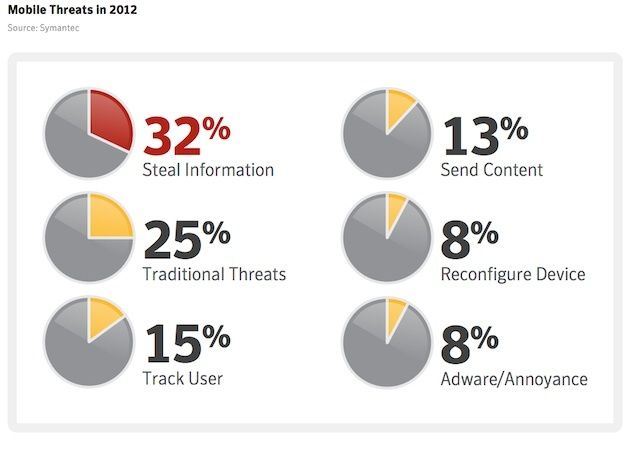
Android’s built-in malware scanner can’t be completely trusted just yet.
With its Android 4.2 Jelly Bean upgrade, Google provided its users with extra protection by introducing an extended malware scanner that’s designed to prevent malicious applications from making their way onto your smartphone or tablet. Not only does it scan the apps you download from Google Play, but also those you acquire from third-party sources, such as Amazon’s Appstore.
It gives Android users peace of mind. The only problem is, new research has proven that the feature is largely worthless. When Google’s malware scanner was put through its paces, it was able to detect just 15.32% of malicious apps.
 Android’s reputation as a nest for malware isn’t likely to heal anytime soon, thanks to a new report from Symantec.
Android’s reputation as a nest for malware isn’t likely to heal anytime soon, thanks to a new report from Symantec.




